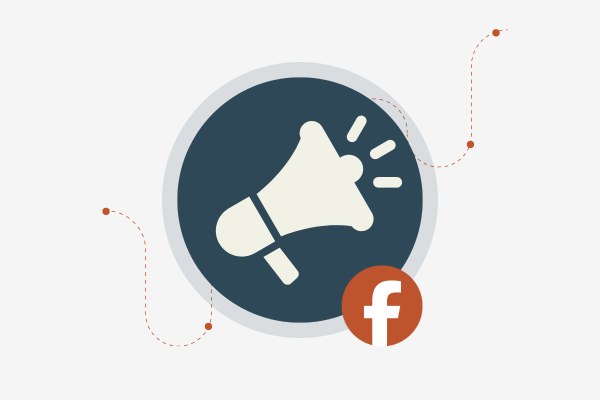How to Boost Your Online Store’s DPO: Master Cash Flow Like a Pro
Boosting your store’s Days Payable Outstanding (DPO) can be like giving your cash flow a little caffeine boost. Imagine holding onto more of your money, longer. Sounds good, right? Well, that's what happens when you increase your DPO effectively. Strategically delaying payments to suppliers can free up cash that bolsters your business’s financial health.
You might be wondering how to actually achieve this without hurting relationships with suppliers. It’s simpler than you think. It's about finding that sweet spot where you balance payment terms and preserve cash. Whether you're navigating different economic conditions or just looking for a quick win, tweaking your DPO can make a difference.
Through careful assessment and smart strategies, you can use DPO as a powerful lever to not just stabilize cash flow but also support growth. When done right, it’s all about making your money work for you in the best possible way without unwanted risks.
Key Takeaways
Boosting DPO helps improve cash flow.
Strategies can increase DPO without harming supplier relationships.
A well-managed DPO supports business growth.
Understanding DPO and Its Impact on Cash Flow
What's the deal with Days Payable Outstanding (DPO)? It’s all about timing your payments right. Mastering DPO can juice up your cash flow and make your business more liquid. Let's break it down.
Defining DPO and Its Role in Finance
DPO is a financial metric that tells you the average number of days your business takes to pay its suppliers after receiving goods or services. It's a key player in cash flow management. Why? Because when you extend your payment terms, you hold onto your cash longer. That’s extra cash you can use to grow your business.
Think about it like a free loan. A higher DPO means more liquidity. It gives you room to breathe, invest, and plan for big moves. But, keep an eye on relationships with suppliers. They might not be thrilled if you stretch those payments too far.
How DPO Affects Business Liquidity
When it comes to boosting liquidity, DPO is a secret weapon. Paying your bills later means cash in hand now. This boosts liquidity, giving you more flexibility to manage daily operations. What could you do with that extra cash? Maybe you invest in more inventory, hire new talent, or even update tech.
But watch out! If your DPO gets too high, suppliers might not be happy. You want to strike the right balance between keeping your cash flow smooth and maintaining strong supplier relationships. It's not just about delaying payments but managing them smartly.
The Relationship Between DPO and Cash Conversion Cycle
DPO is a critical part of the cash conversion cycle. The CCC measures how fast you turn your investments into cash. A longer DPO can lengthen this cycle, giving you more time to turn inventory into sales before paying suppliers.
Get this right, and you can use that cash to reinvest in your business. You reduce the time your money is tied up and boost your financial health. Just remember, a healthy CCC isn't only about pushing DPO to the limits—it's about creating balance and harmony in your financial world.
Assessing Your Current DPO
Understanding your Days Payable Outstanding (DPO) is critical. This can help you see where you stand and where you need to improve to manage your cash flow better.
How to Calculate DPO Correctly
First, you need to know how to calculate your DPO accurately. To get started, gather your average accounts payable and your total cost of goods sold (COGS) over a set period—usually a year. Here’s the formula:
[ \text{DPO} = \left( \frac{\text{Average Accounts Payable}}{\text{COGS}} \right) \times 365 ]
Let’s break it down. Average accounts payable is found by adding the beginning and ending accounts payable for the period and dividing by two. Use this carefully, because a small error can skew your results. Getting your numbers right is the first step to understanding how your cash flow operates.
Analyzing Your DPO Against Industry Benchmarks
Next up, compare your DPO to industry benchmarks. This is where you see how you stack up and if you’re keeping pace with competitors. Different industries have different norms, so don’t stress too much if your numbers differ significantly from unrelated sectors.
Look at trends in your sector for a clearer picture. Identify if your DPO is higher or lower than average. If yours is too low, you might be missing out on better payment terms. A higher DPO can mean you're optimizing cash flow, but be careful not to damage supplier relationships. Finding the right balance is key to growing your business successfully.
Strategies for Improving Your DPO
Improving your Days Payable Outstanding (DPO) can free up cash and give you more control over your finances. Focus on payment terms, discounts, and vendor relationships to transform your cash flow.
Negotiating Better Payment Terms With Suppliers
Want more money in your pocket longer? Work those payment terms!
First, talk to your suppliers. Negotiate longer terms that give you breathing room. Longer terms can boost your High DPO and cash flow.
Not sure how? Show suppliers your reliable payment history. Suppliers like knowing they'll get paid. Maybe they'll extend your terms. It shows trust and strengthens your strategic relationships.
Remember, the worst they can say is no. So, swing for the fences!
Leveraging Early-Pay Discounts
Here's a game-changer: early-pay discounts. They're like finding money on the street.
Some suppliers love cash upfront. Ask about discounts for early payments. Even a small percentage can add up.
Check if the discount is better than your investment return. If yes, jump on it. Improve your DPO while saving money. It's a win-win.
Calculate carefully, though. Don't let discounts lead to a cash crunch. Balance is key!
Optimizing Vendor Relations to Extend Days Payable
Strong vendor relations can stretch your payables. It’s all about relationships.
Talk to your vendors regularly. Build trust. When they like you, they're more likely to give you leeway with payment terms.
Join vendor programs or groups. Sometimes this helps you get better terms naturally.
Also, keep an eye on competitor vendor relations. Are they doing something you’re not? Learn from it and apply what fits.
Improving your vendor relations isn’t just for DPO. It’s about building a network of support for long-term growth.
Cash Flow Management Tactics
Boosting your online store's cash flow can be a game-changer. Focus on key areas like synchronizing days payable and receivable, and simplifying how your accounts payable operates. Here’s how you can make it happen.
Matching DPO with Days Sales Outstanding (DSO)
Ever heard the term “balance is key”? It’s golden advice when considering your DPO and DSO. If your DPO is in sync with your Days Sales Outstanding, you’re set for success. Keep your payables and receivables in harmony.
When these two numbers match up, cash flow issues shrink. You’ll find it becomes easier to plan for new stock or unexpected expenses.
Check your metrics: Understand the average days it takes to collect cash. Do the same for how long you take to pay suppliers. Look for gaps and address them. Use your data to streamline your business operations and avoid any nasty surprises.
Streamlining Accounts Payable Processes
Simplicity is your friend. Simplifying the accounts payable process can give a major boost to your operational efficiency. Have clear processes, so you’re never the last to pay up. Clear your desk of cluttered invoices and focus on organizing. A tidy process means fewer mistakes.
Automation is key: Use tools and software to automatically log, track, and pay your bills on time. Consider negotiating better terms with suppliers to stretch your cash flow.
Stay sharp and keep your workflow smooth to prevent hiccups that slow you down. It’s all about making everything as seamless as possible.
Mitigating Risks of a High DPO
When your Days Payable Outstanding (DPO) gets too high, you risk fines and breaking supplier trust. You must also find the perfect balance between cash on hand and paying bills late.
Avoiding Penalties and Damaging Supplier Trust
Don't let a high DPO backfire. Suppliers might get antsy if you take too long to pay. If they lose faith, you could face tight payment terms or even penalties. Late fees make cash flow worse.
Tip: Keep an open line of communication. Regular updates to suppliers make a big impact. They need to know when they'll get paid. Trust me: breaking supplier trust can cost you more in the long run than delaying payment helps.
Strive for a Low DPO. It builds strong supplier relationships. Be reliable. Pay on time. Avoid being that store that everyone hates doing business with. Use incentives like early payment discounts to maintain positive vibes.
Finding the Liquidity Sweet Spot
High DPO means you hold on to your cash longer. Sounds great, right? But it’s a tightrope walk between having cash and going too far. Go too high, and you risk penalties.
First, figure out your sweet spot. It’s about balancing your liquidity with the risk of setting a new record for late payments. Look at your operating cycle. Calculate the minimum cash you need available.
List:
Analyze cash flow needs.
Monitor supplier payment terms.
Adjust based on market conditions.
Stay agile. Pay attention to what the market tells you. Alter your DPO based on business cycles. This mitigates risk while still keeping that sweet cash flow alive.
Leveraging DPO for Strategic Business Growth
You want to transform your online store, right? Improving Days Payable Outstanding (DPO) can open up new opportunities for growth and investment. Make it part of your financial strategy, and see how your business can thrive.
Investment Opportunities Spurred by Improved DPO
By increasing your DPO, you get a chance to improve cash flow. Holding onto cash longer gives you more leeway to invest in initiatives. Think of it as a way to strengthen your business backbone.
With the extra cash, you can upgrade your tech, expand your product line, or even explore new markets. It's like having a secret weapon to boost your growth. This makes your business more competitive and gives you a good shot at taking the lead in your industry.
So, when you're thinking about pumping up your DPO, think investments. Look at the returns you can get by using that money smartly. It's all about making every dollar work harder for you.
Integrating DPO into Overall Financial Strategy
When you think DPO, don’t see it as just a number. See it as a part of your financial strategy. Align it with your strategic goals to make the most out of your cash flow. Use the freed-up funds to meet both short-term and long-term objectives.
Plan how the improved cash flow can support operational needs and growth targets. It’s not just day-to-day savings—it can fuel big dreams.
Remember, it’s all about planning. Regularly review your DPO metrics and align them with your business goals. This keeps your finances tight and ensures your strategy stays solid. Make it a core part of how you run your business.
Tackling DPO in Different Economic Climates
Maximizing days payable outstanding (DPO) can offer your online store crucial flexibility. Understanding how to adjust your strategies in various economic climates is essential for maintaining strong cash flow.
Adapting DPO Strategy to Market Shifts
Economic landscapes change. You need to keep up with these shifts to survive. When consumer spending rises, increase your inventory. This helps you extend payments, tapping into the benefit of a higher DPO.
But when the market tightens, you must tighten too. Stand firm with suppliers. Negotiate better terms or talk about delaying payments, as holding onto your cash becomes key. It’s a balancing act. Adjust, adapt, and keep an eye on those market tremors. Control costs and be proactive, not reactive.
Maintaining DPO During External Economic Pressures
When things get tough globally, stay tough locally. External pressures, like inflation or supply chain hiccups, mess with your cash flow. Your DPO strategy needs to flex here too.
Talk to your suppliers. Build solid relationships so when pressures rise, they’re more willing to help. Shorten your payment cycles when external forces ease up. But when pressure climbs, extend them to hold onto cash longer. Use economic conditions as your guide. Always measure and adjust. That’s how you win during uncertain times.
Final Thoughts on Maximizing Your DPO
Let's talk about your secret weapon in cash management: Days Payable Outstanding (DPO). It's not just a financial metric—it's your lifeline. Want to hold onto more cash? Extend your DPO.
Paying later means more cash stays in your pocket longer. Simple, right?
Think about your procurement strategies. Instead of rushing, take your time. Work those terms with suppliers. Get the best deals.
Now, focus on Cost of Goods Sold (COGS). Compare how you're doing with industry peers. If they're getting better terms, find out why.
Shorter Days Inventory Outstanding (DIO) can boost your cash flow. Move your products quickly. Keep that inventory turnover high.
Onto receivables. Make sure you’re collecting cash as fast as you’re paying it out. You want a balanced cash conversion cycle.
Stay ahead by evaluating these metrics regularly. Keep optimizing and adjusting. Don’t settle for average—aim for extraordinary.
The key is finding a sweet spot where you pay just in time. Long enough to benefit your cash flow but short enough to keep suppliers happy.
Remember: This isn’t just about stretching payables—it's real strategy.
Your store's success hinges on your DPO. Use it to your benefit, and you’ll see how it shapes your business’s cash landscape.
That's how you become a champion of your domain!







